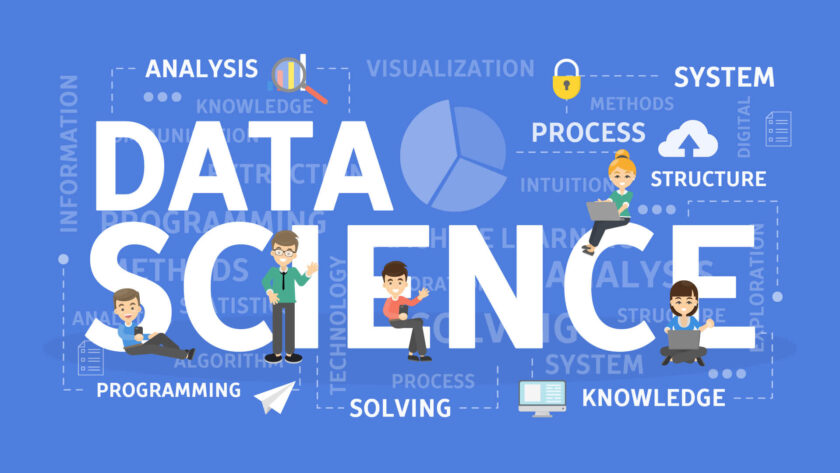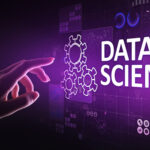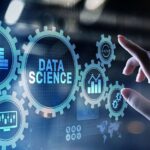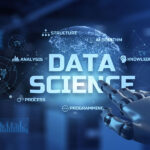In recent years, data science has emerged as a game-changer in many industries, and healthcare is no exception. With the increasing availability of vast amounts of health data—from electronic health records (EHRs) to medical imaging—data science has unlocked unprecedented opportunities for improving patient care, optimizing healthcare systems, and enabling personalized treatments. By leveraging techniques in machine learning, predictive analytics, and artificial intelligence, data science is playing a pivotal role in revolutionizing the way healthcare is delivered.
In this article, we will explore the transformative power of data science in healthcare, highlighting key applications, the challenges it faces, and its potential to shape the future of patient care.
1. The Foundation of Data Science in Healthcare
At its core, data science involves extracting actionable insights from vast amounts of data, and in healthcare, this data can come from multiple sources:
- Electronic Health Records (EHRs): Comprehensive patient records that include details about medical history, diagnoses, medications, treatment plans, and outcomes.
- Medical Imaging: Data derived from X-rays, CT scans, MRIs, and other imaging techniques, which can be used to detect anomalies and guide treatment decisions.
- Genomic Data: Data obtained from genetic testing and sequencing, which can inform personalized treatments and identify patients at higher risk for certain diseases.
- Wearable Devices: Fitness trackers, heart rate monitors, and other wearable technologies that provide continuous streams of real-time health data.
- Clinical Trials and Research Data: Data gathered from scientific studies and clinical trials that test new treatments, drugs, and technologies.
Data science in healthcare isn’t just about analyzing data for the sake of analysis—it is about using that data to improve decision-making, predict outcomes, optimize operations, and ultimately, enhance the quality of patient care.
2. Key Applications of Data Science in Healthcare
A. Personalized Medicine and Treatment
One of the most promising areas where data science is making an impact is personalized medicine. By analyzing a patient’s genetic data, lifestyle factors, and health history, data science can help develop customized treatment plans that are tailored to individual needs. This approach stands in stark contrast to the traditional “one-size-fits-all” method, where treatments are based on general assumptions about patient populations.
- Genomics and Targeted Therapies: By examining genetic markers, data scientists can predict how patients will respond to certain drugs, thus minimizing adverse effects and improving treatment efficacy. For example, cancer treatments can now be more precisely tailored to target the genetic mutations responsible for a specific patient’s type of cancer.
- Pharmacogenomics: This area involves the study of how genetic variations affect a person’s response to drugs. Data science helps identify which drugs will be most effective for an individual, based on their genetic makeup, thereby enhancing drug efficacy and reducing side effects.
B. Predictive Analytics for Early Diagnosis
Data science is revolutionizing diagnostics by enabling early disease detection and risk prediction. Predictive analytics uses historical data and machine learning algorithms to identify patterns that may indicate the onset of a disease before symptoms even appear.
- Predicting Disease Outbreaks: Machine learning models can analyze patterns in public health data, identifying early signs of potential outbreaks such as influenza or COVID-19. By forecasting the spread of infectious diseases, healthcare providers can allocate resources more effectively and take preventive measures.
- Chronic Disease Management: Data science plays a key role in the early detection of chronic conditions like diabetes, heart disease, and hypertension. By analyzing health records, wearable device data, and lifestyle factors, predictive models can identify individuals at risk of developing these conditions, allowing for earlier intervention.
- Cancer Detection: Early detection of cancer is crucial for successful treatment outcomes. Machine learning algorithms can analyze medical images like mammograms or CT scans to identify early signs of cancer that may be missed by human radiologists, improving diagnostic accuracy.
C. Medical Imaging and Computer Vision
Medical imaging is one of the most important areas where data science is having a significant impact. By applying computer vision techniques to images generated through MRI scans, CT scans, and X-rays, machine learning models can detect and interpret patterns more accurately and quickly than human experts.
- AI in Radiology: Radiologists are using AI-powered tools to assist in diagnosing conditions such as lung cancer, fractures, and neurological disorders. AI algorithms can scan medical images for abnormalities, helping radiologists identify potential issues faster, which is especially useful in emergency situations.
- Pathology: Data science is also being used in digital pathology. By converting tissue samples into digital slides, machine learning algorithms can analyze these images to detect cancerous cells and other pathological features, offering faster and more reliable diagnoses.
D. Clinical Decision Support Systems (CDSS)
Clinical Decision Support Systems (CDSS) are AI-powered tools designed to assist healthcare providers in making clinical decisions by offering evidence-based recommendations. These systems integrate data from various sources (EHRs, clinical guidelines, medical research) and provide real-time suggestions to clinicians.
- Decision Support for Physicians: CDSS can help doctors by suggesting potential diagnoses, drug dosages, or treatment options based on a patient’s unique health data. This can enhance clinical decision-making and reduce the likelihood of human error.
- Preventing Medication Errors: Data science models can alert healthcare providers about potential drug interactions, allergies, or incorrect prescriptions, helping prevent medication errors and improving patient safety.
- Optimizing Workflow: CDSS also helps streamline workflows by automating routine tasks like order entry, ensuring that clinicians can focus more on patient care and less on administrative tasks.
E. Operational Efficiency and Resource Optimization
Data science is not limited to improving patient care—it also plays a crucial role in enhancing the efficiency of healthcare operations. By analyzing hospital data, healthcare providers can optimize resource allocation, manage staff schedules, and ensure better patient flow.
- Hospital Operations: Data science techniques can optimize hospital capacity management, helping predict patient admission rates, discharge times, and bed availability. This ensures that hospitals can handle high volumes of patients without overcrowding and bottlenecks.
- Cost Reduction: Predictive models can be used to forecast the demand for services, helping healthcare organizations allocate resources more efficiently and reduce unnecessary expenses. For example, predictive analytics can identify which departments are likely to see high patient volumes and ensure that staffing levels and medical supplies are appropriately managed.
3. Challenges in Implementing Data Science in Healthcare
While the potential benefits of data science in healthcare are immense, there are several challenges to consider when implementing these technologies:
A. Data Privacy and Security
The use of health data raises significant concerns about patient privacy and data security. Healthcare data is highly sensitive, and the misuse or breach of this data can lead to serious consequences, including identity theft, discrimination, and legal liabilities. Ensuring that data is protected through robust cybersecurity measures and complying with privacy regulations (such as HIPAA in the U.S.) is critical to the widespread adoption of data science in healthcare.
B. Data Quality and Standardization
Healthcare data comes from various sources and is often unstructured, meaning it is difficult to analyze without significant cleaning and preprocessing. Inconsistent data formats, missing information, and errors in recording can hinder the ability of data science algorithms to generate accurate results. Achieving standardized data formats and improving the quality of data collection are crucial to ensuring the effectiveness of data-driven healthcare solutions.
C. Integration with Legacy Systems
Many healthcare systems still rely on legacy technologies that are not equipped to handle modern data science tools. Integrating AI and machine learning algorithms into these systems can be complex and costly. Additionally, healthcare professionals may need training to understand how to use these advanced technologies effectively in their practice.
D. Bias in Data and Algorithms
Bias in healthcare data can lead to biased algorithms, which in turn can perpetuate health disparities. If machine learning models are trained on data that reflects historical biases (e.g., disparities in healthcare access, gender bias), the resulting algorithms may exacerbate inequalities. It is crucial to ensure that training datasets are diverse and representative of different patient populations.
4. The Future of Data Science in Healthcare
Looking ahead, the role of data science in healthcare will continue to grow, with several exciting advancements on the horizon:
- AI and Robotics: AI-powered robotic systems will increasingly assist in surgery, enhancing precision and reducing human error. These robots, combined with real-time data analysis, could lead to faster recovery times and better patient outcomes.
- Real-Time Health Monitoring: With the rise of wearable devices and continuous health tracking, data science will play a key role in monitoring patient health in real-time. This will enable doctors to intervene at the earliest signs of potential problems, preventing hospital admissions and improving overall health outcomes.
- Healthcare Chatbots and Virtual Assistants: AI-powered virtual assistants will assist patients in managing their health by offering reminders for medications, providing health information, and scheduling appointments. They can also help reduce the burden on healthcare professionals, allowing them to focus on more complex cases.
Conclusion: Empowering the Future of Healthcare
Data science is revolutionizing healthcare by enabling faster, more accurate diagnoses, improving patient outcomes, and optimizing operational efficiencies. By harnessing the power of data, machine learning, and artificial intelligence, healthcare providers can deliver more personalized care and improve the overall patient experience.
While challenges such as data privacy, integration with legacy systems, and algorithmic bias remain, the future of healthcare is undeniably intertwined with the growth of data science. As technology continues to evolve, healthcare systems around the world will increasingly rely on data-driven insights to make better decisions, enhance the quality of care, and ultimately, save lives.
Key Takeaways:
- Personalized Medicine: Data science allows for customized treatment plans based on a patient’s genetic, lifestyle, and health data.
- Early Diagnosis: Predictive analytics can help detect diseases early, improving the chances of successful treatment.
- Medical Imaging: AI and machine learning are transforming radiology and pathology by enabling faster, more accurate diagnoses.
- Operational Efficiency: Data science helps optimize healthcare operations, improving resource allocation and reducing costs.
- Challenges: Privacy concerns, data quality, and integration with legacy systems present hurdles for widespread adoption.
- Future Outlook: The future of healthcare will involve real-time health monitoring, AI-powered robotics, and enhanced patient care through data-driven technologies.
Data science is poised to be one of the most powerful forces driving the next wave of healthcare innovation, enabling improved patient outcomes, more efficient healthcare systems, and a new era of personalized, data-driven medicine.




